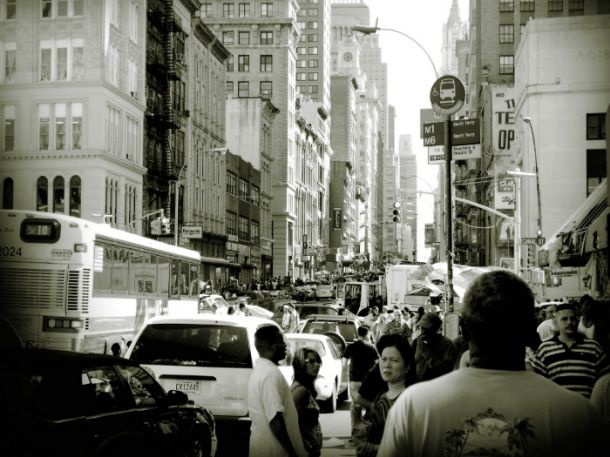
One of the wonderful things about New York City is that it is, and always has been, an international city.From its foundation as New Amsterdam and the immigration waves of the 1800s and 1900s, to the ongoing internationalization of the city’s economic, social, and political spheres, it is a city made up of cultures, people, and influences from around the world. It’s clear that our understanding of New York and its future must be one in which internationals and their impact are taken into due consideration.Crain’s special issue, Stats and the City, highlights perfectly the scale of New York’s international population: the foreign-born residents of New York, now more than 3 million, if counted apart from the rest of the city’s residents would still make up the third largest city in the entire U.S. In 2010, nearly 50 million tourists visited New York, bringing disposable income to fuel job creation which continues to rise. From 2006 – 2014 it is estimated that 75% of hotel rooms created worldwide will be in Manhattan – an overwhelming market share that seems indicative of Manhattan – and New York as a whole – as an increasingly cosmopolitan city.New York might well be heading toward becoming even more international, with Mayor Bloomberg endorsing a plan that would let each state decide immigration policy individually. In May 2012 The New York Post quotes the Mayor: “‘There’s no reason why you have to have a common immigration policy for all of America,’ he argued. ‘You could let each state do it differently. Bloomberg’s comments came as he presented the findings of a study commissioned by the Partnership for New York City and Partnership for a New American Economy.According to the study “Open For Business: How Immigrants Are Driving Small Business Creation in the United States:” foreign-born immigrants are increasingly important as entrepreneurs for the U.S. economic growth and job creation.
“Picking up and moving to another country is brave and risky, so perhaps it is not surprising that immigrants are venturing out and starting new businesses at a rate that far outpaces their share of the population. From local neighborhood shops to America’s largest companies, immigrant business owners contribute more than $775 billion dollars in revenue to the annual Gross Domestic Product and employ one out of every ten American workers at privately-owned companies across the country.”
With such a large foreign-born population, and over 800 languages reported to be spoken in the five boroughs, multiculturalism has become the culture of New York City. From the historic neighborhoods defined by their foreign culture – Little Italy, China Town, Little Brazil, and the like – to the new spread of ethnicities and internationals throughout the metropolitan area, NYC life nothing if not eclectic. Recent trends (2000 – 2010) have changed the ethno-geographical map of the city, and with it the levels of investment and gentrification that accompany internationals who settle.New York has the largest Chinese population found outside of Asia; over 680,000 in the 2010 census. 315,000 residents from the Indian subcontinent call NYC home, according to the 2007 American Community Survey. The 2010 census suggests more than 70,000 New Yorkers claim Arab and Middle Eastern decent, making it the largest concentration in the U.S. Over 520,000 Irish and Irish descended now live in New York, and significant groups of Italians, Polish, Russian, German, Greek, Romanian, Ukrainian, and Hispanic continue to define and change life in NYCRecent New York International articles have covered international areas of the city. Little Brazil – West 46th St. between Fifth and Seventh Avenues – continues to offer up authentic Brazilian food and culture and to act as the heart of Brazilian life in the city. Astoria, Queens continues its own rise as the newest Brazilian hotspot around. The historic German concentration in Yorktown, meanwhile, though now somewhat diminished and spread throughout the city, has left an indelible mark on the area’s architecture and dining – German pubs, delicatessens and churches can be found throughout Manhattan. British culture is equally diverse and equally spread out. The small but prominent British-born population of NYC continues to keep their traditions and customs alive with import shops and even a British butcher selling sausages daily. In all of this, though, one thing becomes clear – the demarcations of the past are becoming eroded, and if anything, it is assimilation and intermingling that has become commonplace.Latino cultures especially have both a historic and currently large presence in NYC, and a range of community centers throughout the city act as vital hubs for these varied cultures. Puerto Rican, Dominican, Mexican, Ecuadorian, and Colombian communities all exist throughout the five boroughs, and again, historically concentrated. For every nationality with a presence in the city, there are clusters and communities built up around shared culture, language and life.Perhaps one of the most striking signs of the level of New York’s internationalization is the coexistence at near proximity of large Orthodox Jewish and Muslim populations in Williamsburg, Brooklyn. Its size, and physical limitations, has always meant that New York City pushed communities and cultures together with little option but to coexist or move on. And in NYC, coexisting is always the best option. For a good movie that touches on Jewish-Muslim relations on a personal level, check out Arranged.Knowing how much the current Mayor pushes topics close to his heart, we wouldn’t be surprised to see New York becoming even more international in the near future, opening up new opportunities for international entrepreneurs, and skilled workers to move to the most international place on earth.

